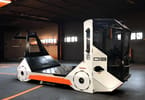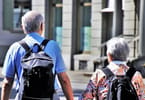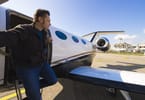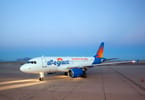Security has top priority! To enjoy an untroubled ski vacation there are a number of things to consider, from thorough preparations to right behavior on the slopes. Here is a list put together by one of Europe’s leading tour operators of the top 10 tips for a safe ski trip.
PREPARATION
A ski holiday should be well prepared for. Drivers should check-up on their car carefully. Is the tyre pressure alright, are snow-chains in the car, is the roof rack tight and secure for the skis? Further, there are a lot of other things that should not be forgotten: e.g. charger for the mobile phone, a small assortment of medication for the trip, hygiene items, warm ski underwear, etc. Ideally, one should set up a packing list, to ensure that nothing important stays behind. Also, it is wise to check-up on the ski equipment early, especially for families with children: are ski boots still alright for size, are the skis too long or too short, or maybe they need to be serviced again? If all these things have been covered, and you luggage is complete, you should be good to go.
FITNESS AND SELF-ASSESSMENT
A sports holiday, such as a ski trip, requires a certain amount of fitness and stamina, which should be attained before the holiday begins. If you think you are fit enough, you should at least warm up before hitting the slopes with a bit of stretching. Often you can find practical info boards in the ski areas, which provide some ideas for warming up, even with skis on your feet. Once you hit the first slope it is really important to self-estimate your skills and adapt your style according to that and to the general piste rules
FIS PISTE RULES
The 10 golden rules for behaving correctly on the piste should be known to all riders and should be taken seriously. These are: be considerate of other riders, know your speed and style, choose the safest way down, be careful when overtaking, swinging in, starting and stopping on the slopes, ascending and descending, pay attention to signs, offer first aid to people who require help and be sure to carry a personal ID. A more detailed explanation of the rules can be found here: FIS rules.
HELMET OBLIGATION
Hardly any winter sports item is as important today as the ski helmet. Although there is still no general obligation to wear a helmet in all European countries, at least the larger winter sports destinations such as Austria and Italy require children up to 14 and 15 years to wear a helmet. In Germany, France and Switzerland there is no such requirement, however all destinations strongly recommend to wear a helmet and like to promote the security aspect. This has been so effective in Switzerland that the quota of helmet-wearers has increased massively here, in comparison to other European countries. That so many adults are now prepared to wear a helmet is surely also down to the fact that they are not only marketed as a security devices. A helmet today is a fashionable accessories, which can be combined with stylish ski goggles. There are even helmets on the market made of recycling materials. An innovative example is set by the French company “Picture Organic Clothing”, which produces sustainable ski clothing from recycled materials. The shell of the model “Hubber” is made of a special polymer structure which is won from corn. Even though this helmet is entirely comprised of recycled materials, it still fulfils the security standard DIN Norm EN-1077, which applies to all ski helmets in Europe.
SECURE EQUIPMENT
Functioning skis and boots are the main focus points for a secure set of gear. According to a study by the DSV, nearly every fifth ski accident can be traced back to faulty equipment. A thorough check should therefore be an elementary part of the holiday preparations. At least once a year, every skier should allow a servicing to the skis. A good grind and waxing ensures that the skis remain intact longer and also enhances security on the piste, as one has more control over services equipment. Checking and re-adjusting the bindings is just as essential. Only when neatly and carefully set will they allow the skier to be released in case of a fall, and therefore prevent serious injuries.
BODY PROTECTION
If you are more of a speed rider, a freestyler or even out and about in freeride areas, protectors should be a standard part of your gear. The polyurethane foam-based shell offers protection of the back, hips and loin and helps to absorb the impact of a fall, preventing bad bruising or even broken bones. Especially cautious riders, insecure children and snowboard beginners should additionally also wear protectors for the hands, elbows and knees.
INSURANCE
If you are a frequent rider and use higher quality equipment, you should be safe in more aspects: not physically, but also privately. Many insurances will not pay if damage has occurred abroad. An international travel insurance is therefore essential. Mostly it is only a small amount which has to be paid additionally, but this can save you a lot of money in case you have to see a doctor, organise a return trip with injuries or you have to visit the dentist. Further recommendable insurances are against breakage and theft of equipment, as well as a cancellation and/or curtailment insurance.
ALCOHOL CONSUMPTION
In the ski area, the same rules apply as on the streets: ride responsibly and do not drink alcohol. Drunk apres ski fans should are not a welcome site on the slopes. Reaction time and coordination is profoundly limited and therefore such riders are not only a danger to themselves, but also to all others. Alcohol is an all-time present feature on ski hut and it is hard to surpass a glass of wine or a tasty beer when you stop for a break. However, if you want to indulge in the party atmosphere, better wait until you have reached the foot of the piste.
PISTE EMERGENCY
It is not likely, but it is not impossible that an accident might occur and someone will have to call out the piste emergency service. In Austria you will need to call 140, whilst the Swiss helicopter service REGA can be reached under 1414. In Italy you have to dial 118 and in France it is only 15. If you can’t or won’t remember all these different numbers, you can always call the European emergency service on 112 and you will be forwarded to the right station.
SAFE ON THE GO
Knowledge of the area, avalanche protection, and a fair amount of respect – this is what freeskiers should have present on mind and back when touring untouched terrain. The most up-to-date avalanche reports should be studied before you leave for a tour. Every freesrider should carry an LVS device, a spade and probe, as well as an emergency kit. Never loose respect for nature and be sure to leave trees and animals unmolested. How to ride off-piste terrain is taught in special lessons, and how to find avalanche victims can also be practised in specially designates areas.






















